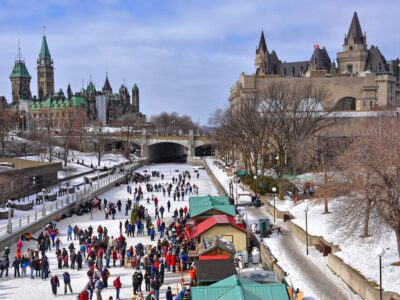
February is mid-winter in Canada, which means it's cold and snowy: ideal conditions for skiing or snowboarding in the Rocky Mountains, snowshoeing through the backcountry of Nova Scotia, or ice-skating in downtown Ottawa. Travelers seeking a remote adventure will also love aurora-watching in the Yukon, a vast and isolated area of the north. Find out more about traveling to Canada in February below.
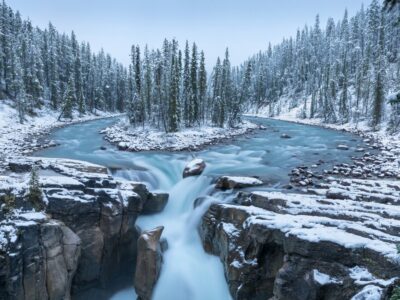
Wherever you go in Canada, January is the coldest month of the year. That's great news if you're a keen skier or snowboarder or would like to try other fun winter sports. From snowshoeing in British Columbia to ice skating in the capital, Ottawa, or just hunkering down indoors and enjoying a museum (or three), there's a lot to do in Canada in January.
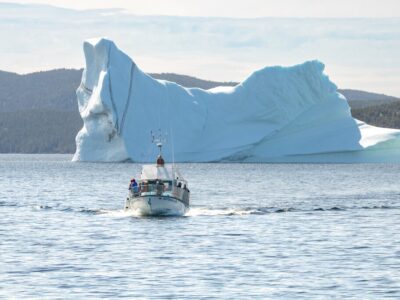
March is late winter in Canada, meaning snow and cold temperatures linger in some parts of the enormous country, but tentative spring-like conditions can be found. If you want to ski, snowboard, or enjoy other snow sports, this is still possible in the Rocky Mountains and elsewhere. However, coastal British Columbia is a good option to take advantage of thawing conditions and milder temperatures. From skiing to iceberg viewing, here's what to see and do in Canada in March.
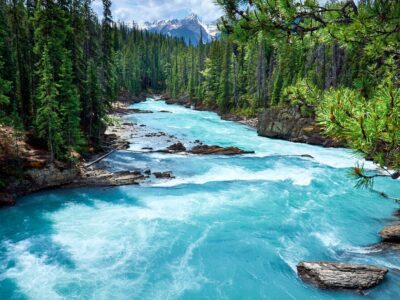
Visit Canada in May for a shoulder-season combination of mild temperatures and few tourists. With thawing snow, white-water rafting and kayaking are fun, icebergs float down the east coast, and birds and wildlife are abundant in the national parks, such as Alberta's Jasper. Read on to find out more about where to go and what to do in Canada in May.
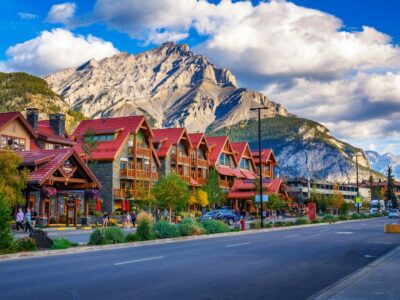
June is the start of summer in Canada and an ideal time to visit to avoid the crowds that descend on popular places later in the season. With comfortable temperatures throughout the country, this is a great month to get outdoors. Paddle a canoe on a glacial lake, spot beluga whales on a zodiac boat tour, or while away the warm days at a cottage beside the Great Lakes: there are plenty of things to see and do in Canada in June.
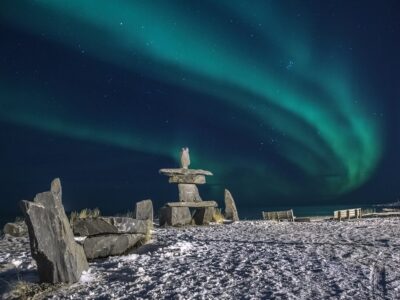
November is the end of fall and the start of winter in Canada. Temperatures drop, turning rain to snow. But that's great news if you want to enjoy winter sports as the ski season starts later in the month. Wrap up warm and go sightseeing in atmospheric Montréal or Québec City, or head north for aurora borealis viewing. There's plenty to see and do in Canada in November.
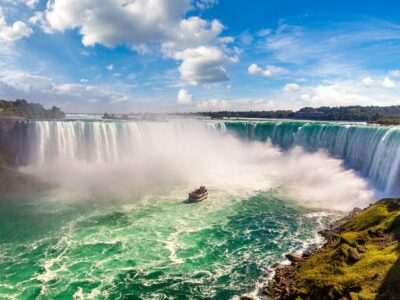
August is midsummer in Canada, and you'll be spoiled for choice about where to go. The most frequented places—including the Rocky Mountains, Niagara Falls, and the lakeside towns of the east—are popular for good reasons, but you can also find many quiet, remote spots across this enormous country. Rent a cottage at the Great Lakes, kayak off the coast of British Columbia, hike in the mountains, and much more. Discover some of the best sights and activities in Canada below.
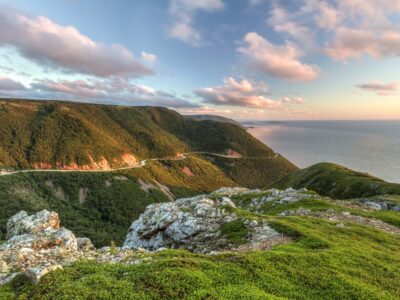
July is midsummer in Canada, which is also peak travel season. But Canada is an enormous country, and it's easy to get away from the crowds if you want to. While the Rocky Mountains are wonderful in summer (book in advance!), you could also head to the central coast of British Columbia or the shores of Hudson Bay for a remote natural experience. Find out more about traveling to Canada in July.
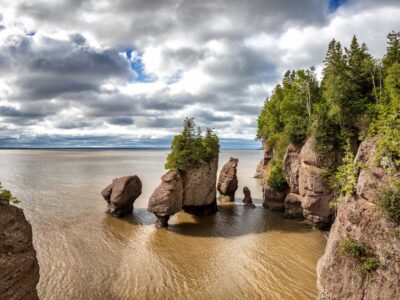
Abundant in nature, culture, scenery, and sport, Canada is welcoming in all seasons. The best time to visit with the most predictable weather is May to September. Expect long, hot summer days with bustling streets during this peak tourist season. Visit between October and April to experience Canada's changing foliage and cold winter with picturesque scenery, possible northern light sightings, and cups of hot cocoa by the fire to warm up after a day of winter activities like skating, skiing, and dog sledding._x000D_

If you only have one day in Vancouver, this itinerary offers a whirlwind tour of the city's cultural scene and natural beauty. Kick off your 24 hours with breakfast in hip Yaletown, then explore the artsy district of Granville Island. In the afternoon, head into the nearby rainforest to traverse the Capilano Suspension Bridge, then wrap up in Downtown Vancouver with dinner at one of the city's best restaurants. This short-but-sweet itinerary promises a sampling of both the city life and natural wonders that make this Canadian city so captivating.
